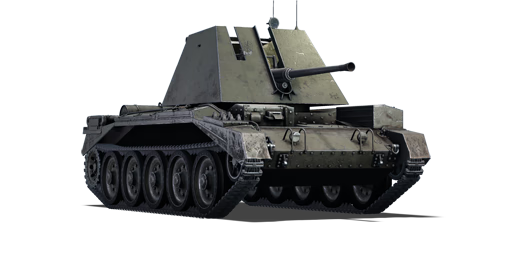



The Crusader III Anti-Aircraft Mark I is the first anti-air modification of the Crusader III, which is the third variant of the A15 Crusader cruiser tank family. The original 57 mm Ordnance QF 6-pounder was replaced with a 40 mm Bofors anti-aircraft gun in an open-topped turret with an autoloader and automated turret. The crew consisted of four people: the commander, the gunner, the loader, and the driver. Beginning with the Normandy landing, the Crusader III Anti-Aircraft Mark I was issued to artillery light anti-aircraft regiments, but they were withdrawn from service soon after D-Day due to Allied air superiority and a lack of Luftwaffe targets, necessitating much fewer anti-aircraft platforms.
Introduced in Update 1.55 "Royal Armour", the Crusader III Anti-Aircraft Mark I is an interesting anti-aircraft vehicle that is also capable of carrying out anti-tank roles. Despite its anti-aircraft designation, the Crusader III Anti-Aircraft Mark I struggled in this duty. The 40 mm Bofors anti-aircraft gun fires slowly with low-velocity ammunition, making it difficult to target fast-moving enemy aircraft. Nonetheless, a single hit will frequently cripple any adversary aircraft. As a result, it is critical to hide and wait for an ideal moment before opening fire on an enemy aircraft. It can also act as an anti-tank weapon. This vehicle's armour-piercing ammunition can penetrate the frontal armour of light and medium tanks, as well as the side or rear armour of some heavy tanks. Due to the low post-penetration damage, you will need to target more than one section of an enemy tank to successfully destroy it.
| Belt | Belt filling | Armor penetration (mm) at a distance: | |||||
|---|---|---|---|---|---|---|---|
| 10 m | 100 m | 500 m | 1000 m | 1500 m | 2000 m | ||
| AP-T/FI-T | 72 | 69 | 58 | 46 | 37 | 29 | |
| FI-T | 9 | 8 | 7 | 6 | 5 | 4 | |
| AP-T | 72 | 69 | 58 | 46 | 37 | 29 | |












Mobility | |
|---|---|
Protection |
|---|
Firepower | |
|---|---|